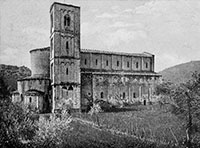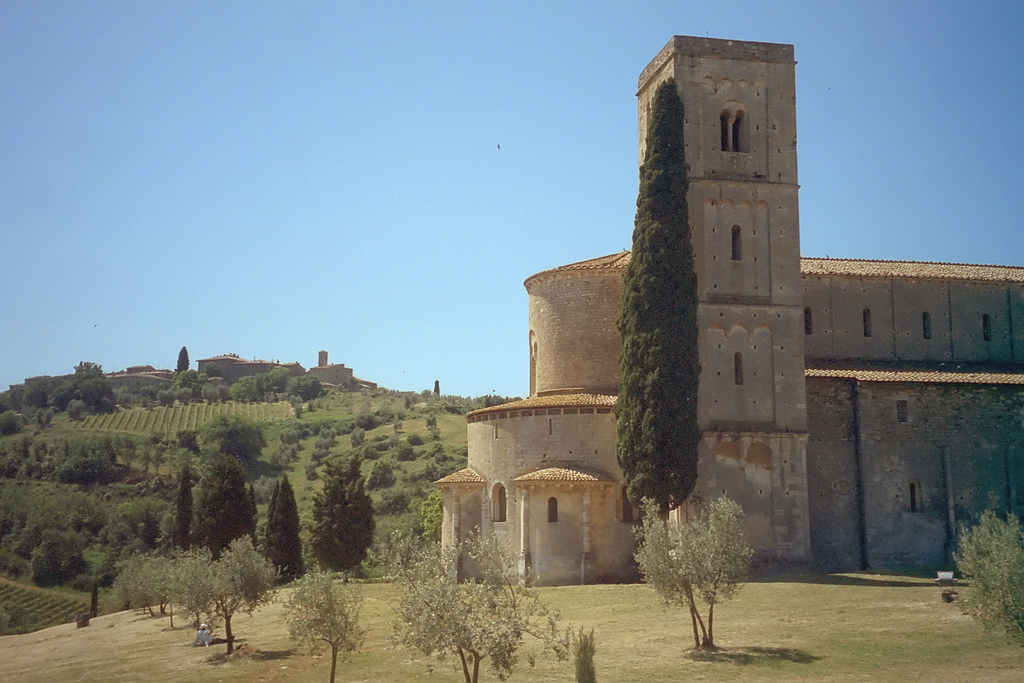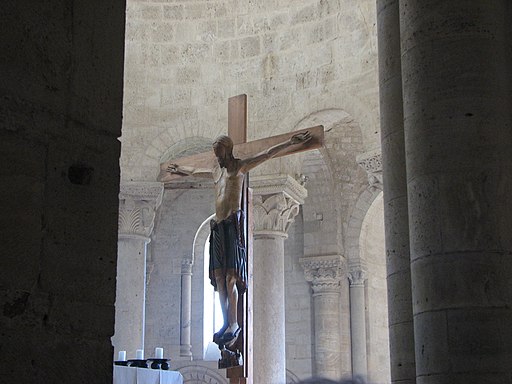The abbey of Sant'Antimo, Montalcino
|
The Abbazzia di Sant'Antimo is located about 10 kilometers south of Montalcino and about twenty kilometers from Podere Santa Pia, an authentic holiday home in Castiglioncello Bandini, a small village in the south of Tuscany. The medieval Benedictine monastery is one of the most important Romanesque buildings in Italy.
|
Map The Abbey of Sant'Antimo OpenStreetMap | Enlarge map
|
Construction of the present church was begun before 1118, a date which is inscribed on the altar step and on a column to the left of it. Parts of the earlier structure remain visible in the crypt and in the so-called Cappella Carolingia, or Carolingian chapel.[3] This was the period of greatest power of the abbey, which had authority over 38 churches, from Pisa to Grosseto, and control of about 1000 mansi, or farm estates, throughout Tuscany.[2][3] The most important possession of the abbey was the castle of Montalcino, which was the residence of the abbot.
|
||||
|
|
||||
 |

|  |
||
Abbazia di Sant'Antimo in una vecchia foto d'epoca
|
L'Abbazia di Sant'Antimo | La navata centrale vista dal matroneo
|
||
 |
 |
 |
||
| L'Abbazia di Sant'Antimo, il crocifisso dell'altare maggiore
|
L'Abbazia di Sant'Antimo, l'abside della chiesa originaria | La facciata della Cappella Carolingia (a sinistra) | ||
Some beautiful walks are situated in the immediate vicinity of the abbey. An easy walk runs from Montalcino to the Abbey of Sant'Antimo.
|
||||
#travelingintuscany#poderesantapia Abbazia di Sant'Antimo. Il cipresso sembra accarezzare il campanile… |
||||